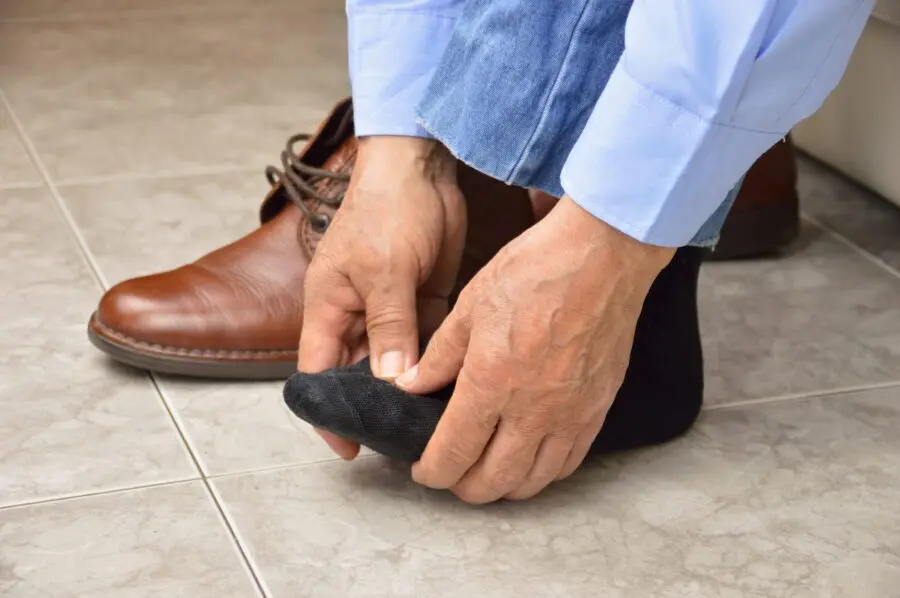
Normally, the big toe has a limited range of motion. However, a joint obstruction can occasionally induce knee discomfort, heel pain, and ankle sprains.
This is known as hallux limitus.
Without therapy, functional hallux limitus can progress to hallux rigidus, a potentially crippling type of big toe osteoarthritis.
Learn about the symptoms, causes, and treatments for functional hallux limitus before permanent harm occurs.
Functional hallux limitus symptoms
One of the risks of hallux limitus is that it is difficult to identify in its early stages.
Because it affects the big toe, it is likely to have symptoms comparable to other diseases.
In order to obtain treatment as soon as possible, you should identify the following symptoms:
- The buildup of corns and calluses on the inner side of the big toe
- Significant discomfort in the big toe and surrounding area
- Pain in the knees
- Tension in the sole of the foot
- Back pain (lumbago)
- A bunion (hallux valgus)
- Changes in posture, sometimes due to muscle compensation
- Repeated ankle sprains
- Supination (walking towards the outside of the foot)
- Claw or hammer toes
When hallux limitus turns into hallux rigidus
If, despite the identification of these symptoms, the hallux limitus is left untreated, the joint can likely become permanently blocked.
This is referred to as hallux rigidus.
This kind of osteoarthritis is characterized by a deformity of the metatarsophalangeal joint, which results in the development of bony growths (osteophytes).
However, hallux rigidus is not the only issue that might result from functional hallux limitus.
It may also lead to other problems, such as:
- Knee tendonitis
- Patellofemoral syndrome
- Capsulitis or metatarsalgia
- Plantar fasciitis
- Bursitis
- Corns on the feet
- Osteitis (inflammation of the bones)
It is recommended to consult a podiatrist as soon as the first symptoms appear, in order to minimize the incidence of such complications.
Diagnosing hallux limitus
Because of its potential impact on the body’s equilibrium, a hallux limitus should be diagnosed as soon as possible.
As a medical foot expert, a podiatrist possesses the necessary instruments and knowledge to diagnose and treat it.
During a clinic visit, the podiatrist will perform diagnostic tests such as:
- The stretch test, which checks the range of motion of the hallux longus flexor tendon
- The biomechanical exam, where the podiatrist notes abnormalities in walking and in a static position
- A digital x-ray of the foot, which highlights the presence of bony growths
Once the functional hallux limitus has been correctly diagnosed, the podiatrist will determine the best treatment methods to pursue.
Causes and aggravating factors
The hallux joint capsule is the direct source of this acute toe pain.
Hallux limitus occurs when the big toe’s imbalanced mechanics hinder the joint from bending and prevent the patient from moving with as much coordination as they should.
Among the factors that can cause a similar plantar disorder, there are:
- Heredity
- The presence of a form of arthritis such as gout, rheumatoid arthritis or osteoarthritis
- Wearing shoes that are too stiff or unsuitable for the size of the foot
- Not warming up or stretching before physical activity
- Practicing sports that put a lot of strain on the big toe joint, such as ballet, running or figure skating
- Recurrent use of high-heeled shoes
- An injury such as a stress fracture that is not properly treated
- Hallux valgus (foot bunion)
A flat or cavus foot
Ways to prevent hallux limitus
Preventing hallux limitus also serves to avoid the emergence of hallux rigidus.
Here are some tips to reduce the chances of the first condition occurring:
- Wear shoes that do not compress the foot
- Purchase orthopedic inserts
- Avoid wearing high-heeled shoes
- Stretch properly before exercise
- Limit sports that put pressure on the big toe
Medical treatments for hallux limitus
Despite preventative measures, certain cases of hallux limitus are more resistant to treatment.
If this disease impairs the big toe’s mobility, the podiatrist can give non-invasive medical treatments.
These include the following:
- Custom-made foot orthotics
- Prescription of orthopedic shoes
- Therapeutic foot manipulation
Foot surgery is more commonly resorted to when the hallux limitus evolves into a hallux rigidus.
PiedReseau – Learn more
Want to learn more about foot disorders like hallux limitus? Our website is brimming with information about various plantar diseases!
Even if the material on the PiedReseau website is invaluable, nothing beats a consultation with your podiatrist in person.
Take care of your feet, they’re precious!
Functional hallux limitus is a painful obstruction of the big toe joint that can cause knee and heel discomfort as well as ankle sprains.
Hallux limitus, like hallux valgus, is a malformation of the big toe. The two diseases, however, do not present in the same way.
The big toe is typically bent inwards in the case of hallux valgus. As a result, the bony protrusion is on the side. Meanwhile, the prominence of hallux limitus is greater on the top of the big toe.
In most cases, hallux rigidus is caused by untreated hallux limitus. This kind of big toe osteoarthritis can be very debilitating in daily life.
Conservative therapies include the use of appropriate footwear, orthopedic inserts, custom-made foot orthotics, and therapeutic foot massage.
Hallux limitus can grow and permanently restrict the joint if left untreated. It can develop to hallux rigidus, a kind of big toe osteoarthritis. Tendonitis, plantar fasciitis, bursitis, and capsulitis are all potential consequences of functional hallux limitus.
It is determined by the seriousness of the condition. Podiatric surgery is only required when conservative therapies fail to alleviate the hallux limitus or when the hallux rigidus becomes extremely symptomatic.
Allow 4 to 6 weeks for typical footwear and somewhat more than 6 weeks for light sports.